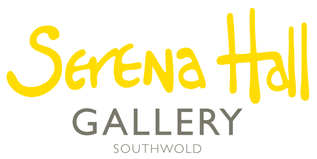
Andrew Pitt
Where did you grow up and where do you consider being “home?”
I grew up in Maldon, on the River Blackwater. Home is East Anglia, really anywhere on the East Coast.
Have you always painted, and have you had another career in your working life?
I have always painted. I started painting when I was ten, inspired by watching visiting artists painting the Thames Barges and fishing smacks in Maldon. I have also had a “proper job”, but now only paint and tutor on residential holiday painting courses.
Your paintings beautifully depict Southwold and the surrounding areas. What does this historical town mean to you?
Southwold, and the surrounding area offers a huge range of varied subject matter for the landscape artist, and it is all within a very short distance of where I live. I am particularly drawn to marine subjects.
What medium do you prefer to work in and why?
Although I paint in oils occasionally, pure watercolour is my preferred medium. Watercolour is ideal for outdoor work. Not only is the medium convenient for working en plein air, but the best medium to use if you wish to capture the changing light of East Anglia. Although painting in watercolour is a high risk activity, the fresh immediacy of the medium is perfect for conveying my vision of the huge skies and marshes of the local area.
You often work ‘en plein air’. Does being surrounded by the elements help you capture the essence of a time or place?
I think it is essential to work outside to get a feeling of a place. And the weather conditions - raindrops, or the texture of washes when attempting to paint in freezing conditions - contribute to achieving an authentic, honest painting.
Do you always work in the moment or is a painting something that you may return to with a memory, a sketch or a snapshot?
I try to be flexible in the way I work. Every painting is different, both in subject matter and conditions. Every painting requires a different solution if it is to be a record of a unique occasion in terms of the time of day, season and weather.
Your paintings illustrate “real life” so to speak, a working harbour, on old mill; how important do you think it is to retain and preserve these elements from the past in today’s fast paced world?
I think many of the most successful paintings are records of the passage of time, rather than a record of an instant. Painting the old alongside the new is how most of us see the world.
You are well know for small detailed observational comments in the corner of some of your works. What is the significance of this?
When I paint outdoors I like to record the details of the occasion, the direction of the wind for example. I think these observations help authenticate the painting. Viewers can be reassured I was there. The painting is a first-hand account of being on location. A visual diary if you like.
You also teach. Do you enjoy this aspect of your work, and does it present different challenges?
Teaching gives me the opportunity to share my interest with like-minded painters. Having to explain to others what I am doing also helps clarify what I am about as regards painting. And frankly, I have learnt an enormous amount from students. Many have become friends; they come from all over the world.
Your paintings seem to give a sense of life calmly carrying on around us; are you a naturally calm person…?!
I am told I come across as calm, although I don’t always feel calm inside.
What brings you joy in your spare time?
Being with my wife.
Who has been the biggest influence in your life and why?
Probably my parents and family.
Describe in a nutshell the structure of your day. Does your painting fit in around you or do you fit in around it?
I paint regularly; painting is a way of life. It might even be “my life”.
As a young person growing up, who was your favourite artist and why?
I suppose my all-time favourite artist is John Singer Sargent. His watercolours are fantastic. He was also one of the hardest working artists there have ever been.
When somebody takes a piece of your work home, what is the most important element to you that they gain from it?
I think it is both flattering and humbling when someone purchases my work, especially when I hear later that the painting is still liked - that it has “stood the test of time”.
If you could offer one piece of advice to a young person now, what would it be?
Be yourself - all the other places are taken….
